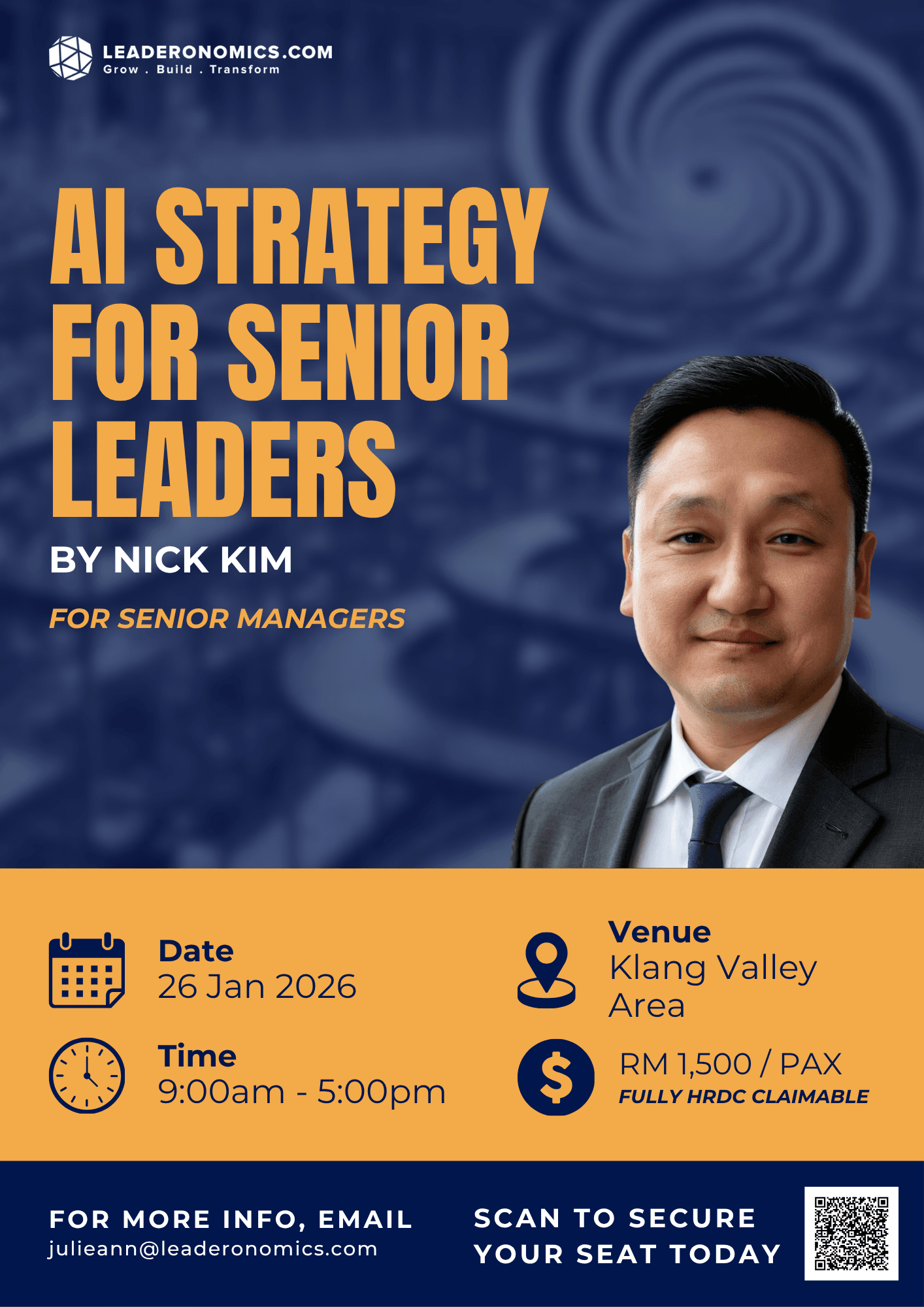The Digital Illusion: When Alignment Looks Real but Progress Stalls

Freepik
Digital transformation is often framed as a technical project. Organisations focus on platforms, data, AI and system upgrades. Yet across Southeast Asia, practitioners working in digital roles often notice that transformation succeeds or fails for reasons technology alone cannot explain. Drawing from years of experience in digital and ecommerce across the region, Sebastian Tai Jian Haw has observed that the human side of change often influences outcomes far more than the tools themselves. When people feel uncertain or unprepared, even the most advanced systems struggle to take hold.
Across organisations, he sees a recurring situation. Companies invest in new capabilities but underestimate the behaviours, cultural norms and emotional responses that shape whether people adopt the change. The technology may be ready but the people may not be. This gap between technical progress and human readiness becomes one of the biggest barriers to momentum.
Related: Why Influential Leaders Know How to Set the Right Pace
The Digital Illusion
Many transformation initiatives begin with polished plans and a sense of alignment. Steering committees are formed. Timelines appear clear. Stakeholders agree on direction. Everything looks organised.
Yet movement is slow.
Sebastian describes this as the digital illusion, where alignment appears strong on paper but does not translate into meaningful progress. Inside the organisation, informal influencers, stretched managers and teams unsure about their shifting responsibilities quietly slow down execution.
Transformation rarely fails because the technology lacks capability. It slows down in the places where questions remain unspoken, concerns remain unaddressed and teams do not feel safe admitting what they do not understand. When uncertainty accumulates silently, the project loses momentum long before implementation.
Cultural Realities in Southeast Asia That Shape Transformation
Southeast Asia’s diversity brings strength but also cultural dynamics that influence how transformation unfolds. Sebastian highlights several patterns leaders often underestimate.
- Avoidance of conflict: Teams prioritise harmony, which makes it harder for concerns to surface early.
- Hierarchy and deference: Employees may wait for direction rather than act independently, slowing the pace digital work demands.
- The importance of face: People hesitate to admit uncertainty in front of peers, which affects learning and upskilling.
- Uneven digital maturity: Malaysia, Singapore, Indonesia and Thailand move at different speeds, making uniform strategies difficult.
These are not weaknesses. They are realities leaders must understand. Transformation built with cultural awareness typically progresses more smoothly because the human context is acknowledged rather than ignored.
E-commerce as a Mirror of Behavioural Change
Sebastian notes that many of today’s transformation challenges echo what the region faced during the early development of e-commerce.
A decade ago, e-commerce adoption required a significant shift in behaviour. Consumers questioned the safety of online payments. Businesses doubted delivery reliability. Teams were unsure how to operate within digital workflows. Leaders hesitated to redirect resources toward a channel that felt uncertain. The technology existed. What slowed adoption was confidence.
Today, e-commerce is deeply embedded in daily life. Customers understand it. Organisations have built entire ecosystems around it. Behaviour matured over time and digital adoption accelerated naturally.
This shift offers a clear lesson. Transformation becomes easier when people are ready for it. Technology takes hold only after trust and belief have been established.
What Technology Really Changes

Source: Freepik
Sebastian observes that new systems create three subtle shifts that matter more than any technical feature.
- Shift in power: Some roles grow in influence while others feel reduced. This creates emotional responses that need attention.
- Shift in pace: Digital work requires faster decisions and more collaboration, which may feel uncomfortable for teams used to slower approval cycles.
- Shift in identity: Transformation causes people to question their relevance and future contributions. This affects confidence and engagement.
Most resistance is not about learning the system. It is about adapting to what the system implies for a person’s identity. Leaders who understand these shifts guide teams through change with greater empathy and effectiveness.
Corporate and Startup Mindsets Offer Different Lessons
Sebastian has worked across both corporate and startup environments and sees clear differences in how each approaches transformation.
Corporates focus on structure, governance and reducing risk. They seek clarity before taking action while startups focus on speed, experimentation and learning. They act first and refine later.
In corporations, mistakes are avoided; in startups, mistakes are learning opportunities.
He believes transformation benefits from both perspectives. Corporates can adopt small cycles of experimentation to build confidence. Startups can apply more structure as they scale. Organisations that blend both philosophies adapt faster and with greater resilience.
How to help people overcome their fear of AI:
The Real Work of a Transformational Leader
Transformation leadership is less about technical expertise and more about shaping an environment where people feel safe to learn, adapt and participate.
- Lowering fear
Teams adopt change faster when they feel supported rather than judged.
- Translating complexity
Simplifying technical concepts strengthens confidence and participation.
- Creating early wins
Small visible successes build belief in the transformation.
- Managing internal friction
Misalignment between functions often causes more delay than the technology itself.
- Supporting middle managers
Middle managers carry the operational weight of change. Their clarity and confidence influence the entire organisation.
Transformation relies heavily on psychology. Leaders who focus on people, emotional safety and clarity typically achieve better results.
A Parallel From Fitness: Tools Help, People Transform
Sebastian notes that transformation follows the same principles seen in personal fitness. In fitness, progress does not depend on having the best equipment. It depends on consistency, discipline and mindset. Equipment supports the process but does not create change on its own.
Organisational transformation works the same way. Technology accelerates possibilities but people determine progress. When behaviour shifts, transformation moves. When it does not, even the best tools remain unused.
Conclusion: Transformation Lives or Dies on Human Behaviour
Across markets and industries, Sebastian has observed a consistent truth. Technology succeeds only when people feel ready to adopt it. Culture shifts only when leaders address the human side of change. Transformation becomes real only when teams trust the process and believe they can adapt.
As Southeast Asia moves into a future shaped by AI and rapid digital evolution, leaders who understand the emotional and cultural dynamics behind change will guide their organisations more effectively. The most successful transformations will be driven not only by strong platforms but by leaders who understand people.
The most challenging upgrade in any organisation is not the technology. It is the mindset.
Upcoming Masterclass for Senior Leaders:
Navigating Opportunities and Risks in the Age of AI
Leadership
Tags: Transformation & Change, Digital, Executing Leadership, Consultant Corner
Sebastian Tai Jian Haw is a freelance discipline coach and experienced digital leader, having led transformations across health, tech, and FMCG brands in Southeast Asia. Outside of work, he helps people build consistency and self-leadership through small, daily habits. Based in Kuala Lumpur.






